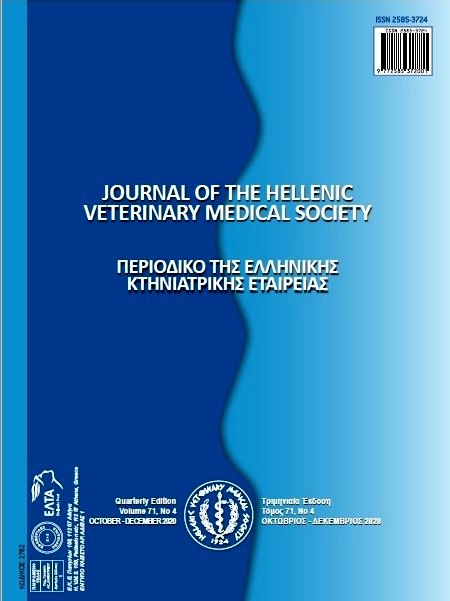Effects of Housing Locations on Feather Damages of Laying Hens in a Free-Range Housing System
Abstract
This study was made to evaluate the effects of different locations of a free range housing system on feather damages of laying hens. The experimental house consisted of three different locations as closed indoor plastic slats, closed indoor litter and outdoor range area. The birds were able to move freely between the locations of the experimental house and they had continuous access to outdoor range during the day. The feather damages of the birds was evaluated with a distance scoring system at 64 weeks of age. Five area in each location of the experimental house were determined at first and then feather damages of five body parts of ten birds in each location were scored to measure plumage quality. Total feather score was defined as the sum of the scores of five body parts of the birds. Best plumage quality was measured in neck in all housing locations (P<0.01, P<0.05 and P<0.01) and total feather score of the birds was significantly greatest (worst) in slats (P<0.05).
Article Details
- Zitationsvorschlag
-
PETEK, M. (2021). Effects of Housing Locations on Feather Damages of Laying Hens in a Free-Range Housing System. Journal of the Hellenic Veterinary Medical Society, 71(4), 2525–2530. https://doi.org/10.12681/jhvms.25931
- Ausgabe
- Bd. 71 Nr. 4 (2020)
- Rubrik
- Research Articles

Dieses Werk steht unter der Lizenz Creative Commons Namensnennung - Nicht-kommerziell 4.0 International.
Authors who publish with this journal agree to the following terms:
· Authors retain copyright and grant the journal right of first publication with the work simultaneously licensed under a Creative Commons Attribution Non-Commercial License that allows others to share the work with an acknowledgement of the work's authorship and initial publication in this journal.
· Authors are able to enter into separate, additional contractual arrangements for the non-exclusive distribution of the journal's published version of the work (e.g. post it to an institutional repository or publish it in a book), with an acknowledgement of its initial publication in this journal.
· Authors are permitted and encouraged to post their work online (preferably in institutional repositories or on their website) prior to and during the submission process, as it can lead to productive exchanges, as well as earlier and greater citation of published work.



